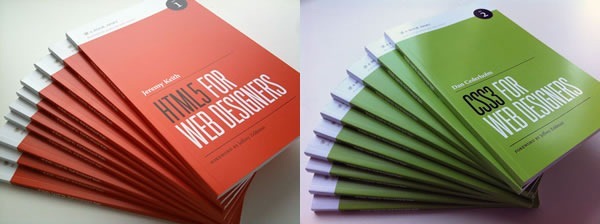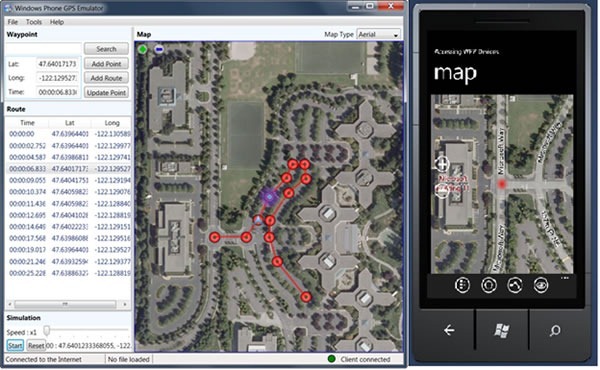
The folks at ReadWriteMobile have written up a summary of Forrester Research’s report on what they see as the big 10 mobile trends for 2011. As with any set of predictions (and especially with tech industry predictions) you should take them with a grain of salt. Still, I found them interesting and thought-provoking enough to do my own summary of these predicted trends and what they mean from a mobile developer’s point of view.
A little aside: Forrester gives itself a “B+” for the accuracy of its predictions. That’s exactly the grade I’d give myself if I were in the prediction business: not as cocky as an “A”, which wouldn’t give you wiggle room to be wrong, and not as bad as a “C”, which basically says “I’m just guessing”. "”B” is a safe rating for yourself, and the “+” is just there to say “trust me”.
Mobile/social/local combinations will explode but generate little revenue. We’re still in the early phases of location-based software, so it’s no surprise that we haven’t yet figured out how to reap profit from it yet. Keep in mind that when a research company like Forrester talks about making revenue, they’re thinking of a companies making millions. There’s still room for a clever indie developer to make what a single person or a small group of people would consider to be a nice sum of cash.
2011: Year of the “Dumb” smartphone user. Not dumb users, but users who are upgrading from “dumbphones”. Gizmodo links to this graph in the New York Times and points out a fact that the NYT didn’t: that the vast majority of the people in the U.S. are still using “dumbphones” (the more polite term is “feature phone”). With economies of scale and subsidies from the telcos, smartphones are getting cheaper and may become the next phone for today’s current crop of dumbphone users. They’re not the early adopter type, and Forrester says that they’re not going to download as many apps as the early adopters, but will consume more mobile media. These users may require different approaches: different types of apps, different UIs, different marketing. You might want to consider them when working on your next app.
Mobile fragmentation continues. The present-day phone market looks like the desktop computer market of the 1980s: there’s so much variety. Some people have smartphones, many have feature phones, and there’s Windows Phone, iOS 3 and 4, and several flavours of Android. This means that for the time being, you’re going to have to weigh the pros and cons of porting your apps or writing them as mobile web apps.
“Apps vs. Internet”: An ongoing debate that doesn’t matter. Forrester says that as far as users are concerned, it’s not an “either/or” choice when it comes to apps vs. the mobile web; they’re happy to use both. What matters is what best suits their needs, or as my frient Kat Mullaly likes to say “Most people don’t care how you pull a rabbit out of a hat; they just want to see the rabbit!” If you’re a mobile developer trying to target the widest array of mobile platforms possible (see “Mobile Fragmentation Continues”, above), you should see if mobile web development with HTML5 is the right path for you. If your target audiences are either “SuperConnecteds” (Forrester term meaning heavy app users) or “Entertainers” (Forrester term for big gamers / media consumers), apps are still the way to go. (If you’re interested in app development, the App Hub is the place to go; if you want to try your hand at mobile web apps, check out the articles at Script Junkie and Dive Into HTML 5.)
$1 billion in mobile marketing. Marketers are expected to spend over USD$1 billion this year on mobile display ads. Someone’s going to have to develop them. Time to start networking with marketing and advertising companies!
Mobile will increasingly prompt users to interact with their environment. Forrester’s talking about NFC here, but there aren’t that many phones out there with NFC capability, and it may be a while before the technology really takes off. Still, consider the ways that people use their phones today – these uses didn’t exist 5 years ago! Phones are being used to find what’s happening around us, find (or alternately, avoid) people, get information about a place or thing (by providing info via text entry, barcode or camera input) and so on. They’re not just phones anymore; they’re personal tricorders.
4G Hype Bigger Than 4G Impact. No surprise there. It took years for 3G to catch on, and while 4G adoption might be a little quicker, it’ll still take some time. As a developer, I’d say keep an eye on 4G, but don’t worry too much about it just yet.
Companies Will Invest First in Convenient Services for their Customers. Forrester says that mobile product and service pros, especially those in the travel industry are going to invest in mobile services to keep their customers happy and coming back for more. Achieving this goal means providing their customers with the most convenient service. As with mobile marketing (see “$1 billion in mobile marketing” above), someone’s going to have to write these apps!
Casual Gaming: Big Stuff. While there’s a lot going on in modern life, there are still many moments consisting of waiting. Waiting in the grocery line, waiting for the commute to end, waiting for the next assignment to come – it makes for bits of downtime spread throughout the day, five minutes here, ten minutes there, maybe a half-hour every now and again. Those bits of downtime are the perfect place for casual gaming, and what better platform for casual games than an always-on-you personal computing device? I may be repeating myself, but only because it’s true: someone’s going to have to write those games. (If you’re interested in casual game development, take a look at XNA, the game dev framework that lets you target not just Windows Phone, but the Xbox and PC as well.)
“Mobile” Will Mean More than Phones. It means tablets/slates too. And ebook readers. And portable media devices. And even services (and their data) that we can access when we’re on the go, and that allow us to sync the data among all our devices. Which means that the cloud is important. You should at least become familiar with cloud computing, and better still, start experimenting with it! (May I suggest Windows Azure as a way to get into cloud computing?)
This article also appears in Canadian Developer Connection.










